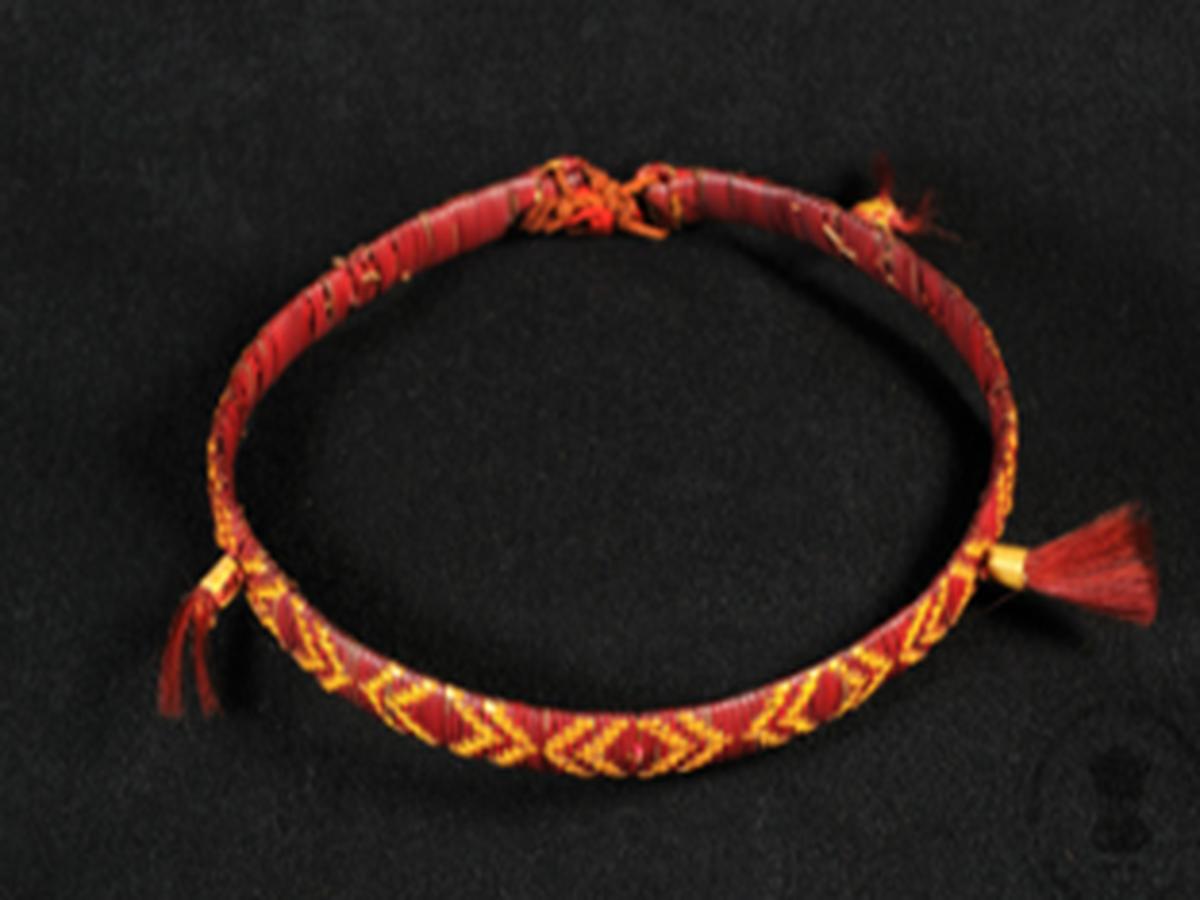State
Tribe Name
Art Type
short description
One royal ornament that captivates the eye truly is the Konyak headband, embellished by the Konyak Naga tribe of Nagaland, India, which is known to be the most famous among warrior tribes in Northeast India. Obedient to tradition, their overt renown for being fierce-and-far-away was only accented by adding natural material to their ceremonial costume as extra creativity reflecting valor, status, and identity.The headband was dyed a bright red and is made of tightly woven cane strips. The color symbolizes power, life, and, in most cases, reminds us of the headhunting ceremonies conducted a little while back. The gorgeously adorned headband is made of yellow orchid skin, in contrast with the intense association that the tribe shares with the natural flora of the area. A number of tufts of stiff, dyed hair are attached along the circumference in small clusters that perhaps symbolize valor or stand for some kind of commemorative significance or rites of passage.
Thumbnail

Filter Postion
Left
Filter Background
Off
Theme
Filter Header Image

content
Image

description
One royal ornament that captivates the eye truly is the Konyak headband, embellished by the Konyak Naga tribe of Nagaland, India, which is known to be the most famous among warrior tribes in Northeast India. Obedient to tradition, their overt renown for being fierce-and-far-away was only accented by adding natural material to their ceremonial costume as extra creativity reflecting valor, status, and identity.The headband was dyed a bright red and is made of tightly woven cane strips. The color symbolizes power, life, and, in most cases, reminds us of the headhunting ceremonies conducted a little while back. The gorgeously adorned headband is made of yellow orchid skin, in contrast with the intense association that the tribe shares with the natural flora of the area. A number of tufts of stiff, dyed hair are attached along the circumference in small clusters that perhaps symbolize valor or stand for some kind of commemorative significance or rites of passage.
Except for this headband, there is nothing that determines Konyaks other than the fact that these symbols have stood for more than just decoration; they speak of cultural ancestry and heritage. Literally, and metaphorically, the weaving of cane, plant fibers, and hair binds the stories of wars, honor, and tradition.Now this glorious headband is in the Indian Museum, Kolkata, a testimony to the artistic ingenuity and cultural significance of tribal crafts in Nagaland. Thus, it opens up a rare window into deciphering the symbolic language of traditional tribal dress and the proud heritage of the Konyak people.
Except for this headband, there is nothing that determines Konyaks other than the fact that these symbols have stood for more than just decoration; they speak of cultural ancestry and heritage. Literally, and metaphorically, the weaving of cane, plant fibers, and hair binds the stories of wars, honor, and tradition.Now this glorious headband is in the Indian Museum, Kolkata, a testimony to the artistic ingenuity and cultural significance of tribal crafts in Nagaland. Thus, it opens up a rare window into deciphering the symbolic language of traditional tribal dress and the proud heritage of the Konyak people.
Image Mode
landscape
promoted
On
Verified
Off
